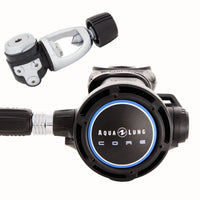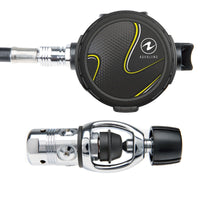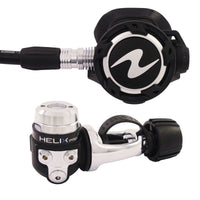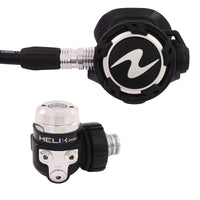Regulator
Diving Regulator
A diving regulator is a crucial scuba diving equipment that allows divers to breathe underwater. It reduces the high-pressure air in the scuba tank to a breathable pressure, delivering it to the diver. Here's what you need to know:
What is a Dive Regulator?
A dive regulator is a pressure-regulating device that delivers air to the diver from the scuba tank. It's designed to reduce the high pressure of the compressed air in the tank to an ambient pressure that the diver can breathe comfortably.
Components of a Dive Regulator
A typical dive regulator consists of two stages: the first stage and the second stage.
First Stage
The first stage attaches directly to the scuba tank. It reduces the high pressure from the tank (around 200-300 bar) to an intermediate pressure (about 8-10 bar above the surrounding water pressure).
Second Stage
The second stage, which the diver holds in their mouth, reduces the intermediate pressure to ambient pressure, allowing the diver to breathe comfortably. It also has a purge button to clear water from the regulator.
Additional Features
Many regulators also have additional features like an alternate air source, or octopus, for emergencies and ports for attaching other equipment like a dive computer or BCD inflator.
Choosing a Dive Regulator
When choosing a dive regulator, consider the type of diving you'll be doing (cold water, deep, etc.), ease of breathing, durability, and serviceability. Choosing a regulator that suits your diving needs and preferences is essential.
Maintenance of a Dive Regulator
Regular maintenance is crucial for the performance and longevity of your dive regulator. After each dive, rinse it with fresh water to remove salt, sand, and other debris. It should also be serviced regularly by a professional to ensure its safety and reliability.
In conclusion, a dive regulator is vital for scuba diving equipment. It allows divers to breathe comfortably underwater, making exploring the underwater world possible.








